Differences and similarities in the operation of outdoor fireplaces-stoves and barbecues: photos of devices
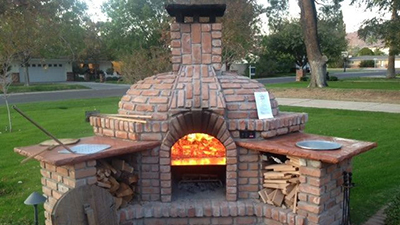
A fireplace stove is a heating device that combines functions of a regular stove and the decorative appearance of a fireplace.
The structure heats up quickly and maintains a constant temperature, which eliminates the need to worry about adding firewood.
Requirements for outdoor fireplace stoves

To ensure that the structure lasts a long time, and to avoid fire and other health hazards (such as carbon monoxide poisoning and other gases) when using an outdoor structure It is important to follow the rules:
- Do not place the device near wooden buildings or flammable materials.
- Bake Place on a non-flammable base.
- The chimney must create sufficient draft.
- The device should be designed taking into account prevailing winds. If installed incorrectly, fuel smoke will enter the room or the center of the area.
- In classic wood burning fireplaces Only dry, coarsely chopped firewood may be burned. It is prohibited to burn impregnated and painted wood, flammable and lubricating materials, plastic, garden and household waste.
- It is not recommended to download into the fireplace more than 5 kg of firewood.
- Maximum continuous burning time is 6 hours.
- Ash discharge realize only from a completely cooled device in a place that does not allow combustion.
Types of stoves and barbecues: photos
By material execution:
- Brick – durable, effectively dissipate heat and have good sound insulation.
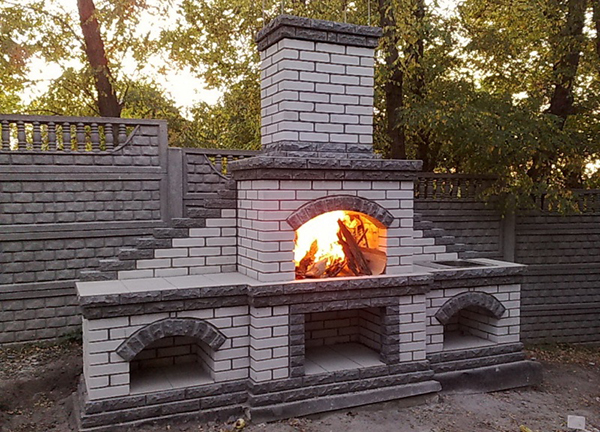
Photo 1. An outdoor fireplace stove made of grey brick, with good heat output, is installed near the fence.
- Stone – are in many ways similar to brick, but not all types of stone have sufficient thermal conductivity.
- Metallic – made of steel or cast iron. The latter accumulate heat better and are also stronger. However, a steel stove is easier to restore in case of deformation.

Photo 2. Decorative stone fireplace stove for providing heat and decorating the local area.
By type used fuel:
- Wood burning – the cheapest option, fuel is inexpensive and can be prepared, however, this type of fireplace is more troublesome to maintain.
- Electrical – do not require constant addition of fuel material, however, they depend on the presence of voltage in the network, and are also inferior in aesthetic terms.
- Biofuels – use special pellet capsules or liquid as fuel. This is the most economical option, but still loses to the wood-burning structure in design.
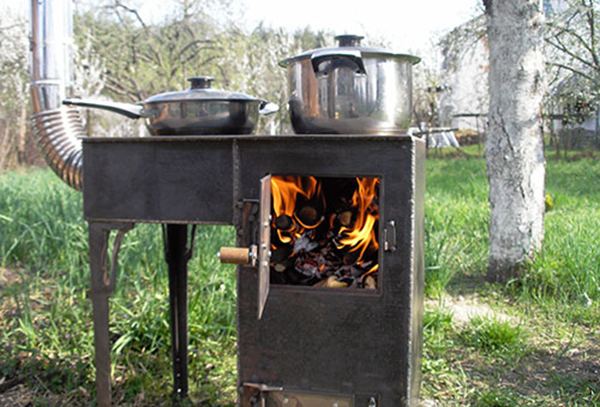
Photo 3. The metal barbecue oven serves both as a source of heat and as a device for preparing certain dishes.
Additional functions:
The stove-fireplace ventilates the air, which is good in rooms with an unpleasant smell. For combustion, such a device uses the air of the room, thus providing ventilation.
Attention! It is possible to install not a classic single-circuit, but double-circuit furnace, allowing you to cook food.
For the garden
Metal or brick structures are most often used. The former are two types:
- Potbelly stoves – the simplest option. They are usually made of sheet metal, and fuel burns inside them. They are suitable for heating food. The disadvantage is that they cool down quickly.
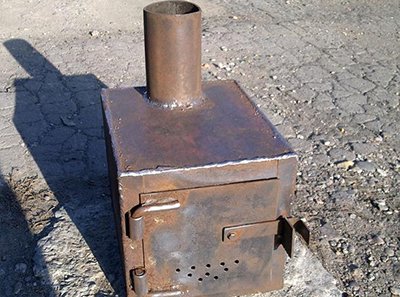
- Long-life furnaces - divided into two compartments: in the first, the fuel (usually firewood) smolders, and in the second, the gases that form burn. This can be called the "golden mean" in choosing a stove.
Although these devices are more expensive than "potbelly stoves", they retain heat longer and are suitable for cooking. At the same time, their construction cost is lower than that of a stone analogue.
Important! Brick units can be varied, their design depends on the budgetThey make both a simple barbecue grill and a combined grill that combines a barbecue area, a hob and a cutting table.
Metallic
Compared to other types of devices, metal units have a number of advantages:
- quick installation, which does not require redevelopment of the premises or additional strengthening of the floor;

- dismantling of the structure during the warm season;
- both the stove and the room heat up quickly;
- installation cost is lower, than the construction of a stone or brick structure;
- used for cooking if there is a special surface.
Flaws:
- required for heating keep the fire going;
- the case heats up quickly, which may cause a burn or fire;
- hot metal oxidizes in a shorter period of time, which reduces the service life.
Brick
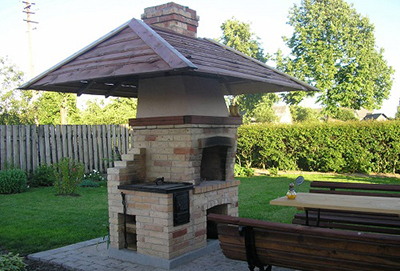
This design has a number of advantages. The main one is aesthetic appearance.
As for the rest advantages, then they are as follows:
- fast and high-quality heating (although in terms of speed, a brick oven is inferior to a metal one);
- Multifunctionality: fireplace, stove bench and cooking area;
- The efficiency of the brick sword reaches 80%;
- the design is easier to clean – the ash pan is a separate compartment;
- long service life.
Flaws:
- required for installation solid foundation or reinforced floor;
- impossibility of dismantling and remove during the warm season;
- The installation costs more than its metal counterpart.
Operating rules
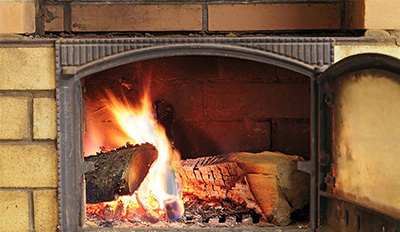
Before lighting the device, you should move the flue damper and check it. for the absence of reverse thrust. If the ash pan is full of unburned coals or ash, it is cleaned.
It is placed on the grate crumpled non-glossy paper, on top of it – chips, torches and firewood small size.
After the ignition criss-cross Larger firewood is added. As the firewood burns completely or almost completely, new firewood is added.
Reference! When high combustion intensity is required, a lot of small firewood is added to the fireboxIf you need slow burning, take a little bit of large firewood.
Useful video
The video offers instructions with visual examples on how to lay a brick outdoor stove with your own hands.
Operation of the chimney
Not only the stove itself, but also the chimney poses a danger during operation.
Therefore, the use of the design requires compliance with the rules:
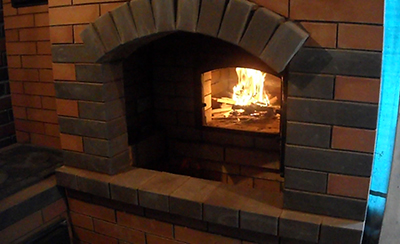
- Clean the chimney in a timely manner – it should be checked every month, and a specialist should be called in every two years.
- Use dry firewood of not very large size. It is not recommended to burn birch. Due to the high tar content, it produces a lot of smoke.
- The new fireplace is being heated in test mode. The best draft is achieved during hot weather, as well as in the early or late hours.
- Whitewash the chimney, this will help to identify cracks.
- The chimney must not have more than two bends in the structure.
- The internal diameter of the chimney must be 10–15% of the portal area. Too large a diameter will promote condensation.






Comments
If we take the experience of our great-grandfathers, then we want to make it as natural as possible, perhaps it will be made of stone, but only put on clay, we don’t want any chemicals, after all, it’s for ourselves!